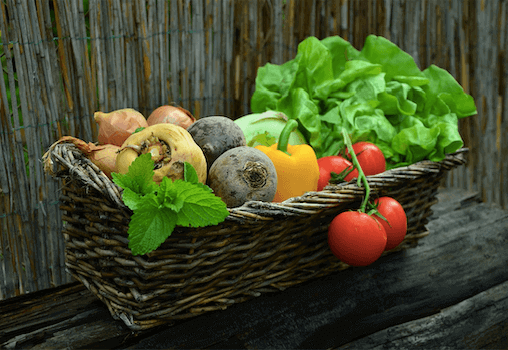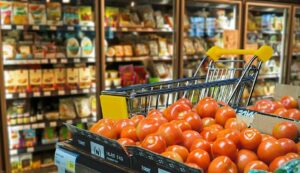Yes, it is possible to get a loan to pay for food expenses. Access to food is a fundamental necessity, and financial challenges can sometimes make it difficult for individuals and families to afford an adequate supply of food.
When things get tough, it is natural to look for ways to get fast cash, and taking out a loan to pay for groceries may seem like a tempting option. With this in mind, Finger Finance aims to explore whether obtaining a loan to pay for food is a viable option, as well as alternative resources and strategies to address food insecurity.
Why Might You Need A Loan To Pay For Food?
Food insecurity affects millions of people globally, including those facing temporary financial hardships, unexpected expenses, or limited income. In times of crisis or when struggling to make ends meet, individuals may seek financial solutions to ensure they have enough food on the table. If you have lost your job or perhaps face a medical emergency that has left your funds dry and you are struggling to budget, a loan can help you secure the food that you need, whether its vegetable, fruits, grains, protein or more.
What Loans Are Available To Pay For Food?
When it comes to obtaining a loan to pay for food, it’s important to consider the available options and their feasibility. Popular examples include:
| Payday Loans: | Payday loans are short-term loans that are typically accessible and have quick approval processes. However, payday loans often come with high interest rates and fees, making them a less advisable option for covering food expenses, as they can lead to a cycle of debt and financial hardship. |
| Personal Loans: | Personal loans from banks, credit unions or online lenders can provide funds for various purposes, including covering food expenses. However, these loans typically require a credit check, and lenders may have specific eligibility criteria and interest rates based on credit history. Individuals with poor credit may face challenges in securing a personal loan. |
| Installment Loans: | Installment loans are another type of personal loan that allow borrowers to repay the loan amount in fixed monthly installments over a specified period. While they may be more flexible than payday loans, borrowers should carefully consider the interest rates, terms and fees associated with these loans. |
| Credit Cards: | Credit cards can be used to cover immediate food expenses. However, it’s important to use credit cards responsibly and pay off the balance in full each month to avoid accumulating high-interest debt. |
There are certainly risks to consider when taking out these financial products since they tend to come with high interest rates and fees that can add up quickly. So if you are already struggling to make ends meet, taking on additional debt could make your financial situation worse.
You should therefore think carefully about whether this is the right option for you and make sure that you would be able to pay back the loan on time. Not only could you incur extra charges by missing repayments, but you could also damage your credit score which would make it more difficult to borrow money in the future.
What Are Alternative Resources for Food Assistance?
Rather than relying solely on loans to pay for food, individuals facing food insecurity can explore alternative resources and strategies including:
Government Assistance Programs
Government programs such as the Supplemental Nutrition Assistance Program (SNAP) in the United States provide eligible individuals with electronic benefit transfer (EBT) cards that can be used to purchase groceries. These programs aim to assist low-income individuals and families in accessing nutritious food.
Food Banks and Pantries
Local food banks and pantries offer free or low-cost groceries to individuals and families in need. These organizations rely on donations from the community and provide essential food items to those experiencing food insecurity.
Community Programs and Charities
Many communities have programs and charities that offer food assistance, such as community meals, food vouchers, or meal delivery services. These resources can provide immediate support during challenging times.
Nonprofit Organizations
Nonprofit organizations often focus on addressing hunger and food insecurity. They may offer programs that provide meals, food vouchers, or financial assistance for groceries.
Budgeting and Prioritization
Creating a budget and prioritizing expenses can help individuals allocate funds specifically for food. By analyzing income and expenses, individuals can identify areas where adjustments can be made to free up funds for food purchases.
Take a hard look at your expenses and see where you can cut back. Look at ways to save money around the house and cancel unnecessary subscriptions such as a gym membership or tv subscription that is less of a priority. You could also look at ways to save money at supermarkets, for instance buying non-branded products which tend to be just as good quality but at a more affordable price.
Local Support Networks
Reaching out to local support networks, religious organizations or social services can provide additional assistance or connections to resources for obtaining food.
Explore Ways To Increase Your Income
Get creative and look into starting a side hustle, freelancing or taking up a second job. This will certainly help you get some extra dollars to pay for your food bills. You could also sell unwanted items you no longer need via a garage sale or through online platforms such as eBay.
Borrow From Family Or Friends
If you are in need of food, there is no doubt your close family and friends will try to support you if they can. Perhaps they may even offer to lend you money. If this is the case, just make sure that you create clear repayment terms to avoid any strains in your relationship.
Concluding Thoughts
While obtaining a loan to pay for food is technically possible through various loan options, it’s important to carefully consider the terms, interest rates, and potential long-term consequences. Exploring alternative resources, such as government assistance programs, food banks and community programs, can provide more sustainable solutions to address food insecurity. Prioritizing budgeting, seeking local support and accessing charitable organizations can contribute to ensuring individuals and families have access to sufficient and nutritious food without relying solely on loans.




